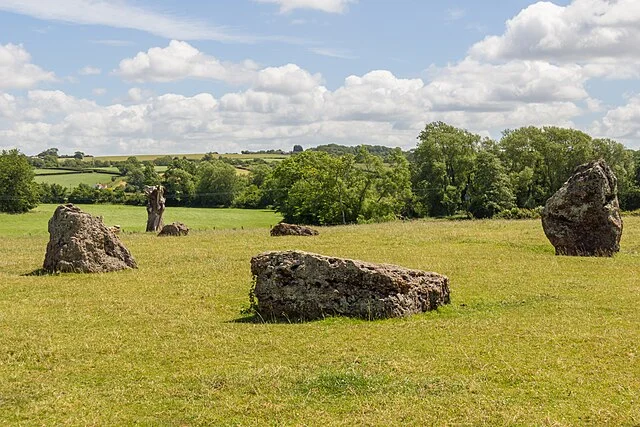The Stanton Drew stone circles are a significant prehistoric monument in Somerset, England. These circles date back to the Late Neolithic period, around 3000 BC. Located in the Chew Valley, they are the third-largest stone circle complex in England, following Avebury and Stonehenge.
Get your dose of History via Email
Description of the Stone Circles
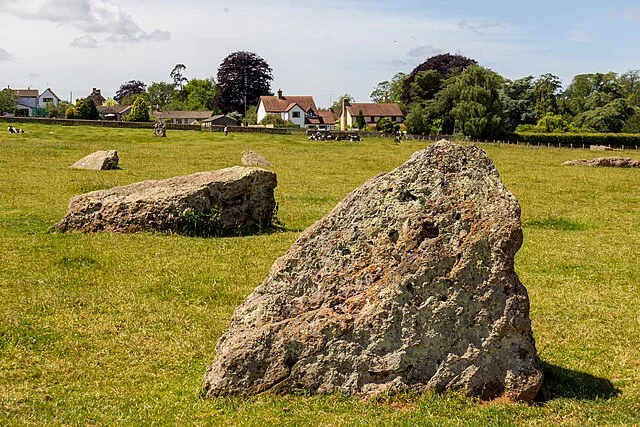
The site consists of three distinct stone circles: the Great Circle, the North-East Circle, and the South-West Circle. The Great Circle, measuring 113 meters in diameter, is the largest. It originally consisted of 30 stones, of which 27 remain standing or fallen. The North-East Circle contains eight stones, while the South-West Circle holds 12 stones. Nearby, two additional structures, known as The Cove and The Avenue, add to the site’s complexity.
The stones vary in size and shape. They are primarily made of local red sandstone, and their weight can reach several tons. The stones were likely quarried nearby and transported to the site using simple tools and human labor.
Function and Purpose
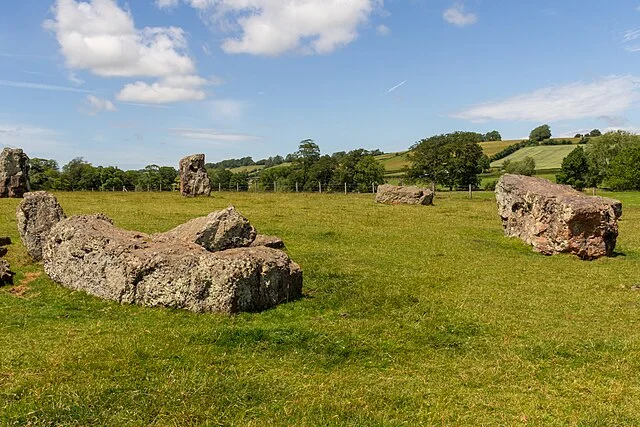
Like other stone circles from this period, the exact purpose of Stanton Drew remains unclear. Archaeologists believe these circles may have served as ritual or ceremonial spaces. Some researchers have proposed that the stones were aligned with celestial events, such as solstices or lunar cycles. However, no definitive evidence confirms these theories.
Archaeological Research
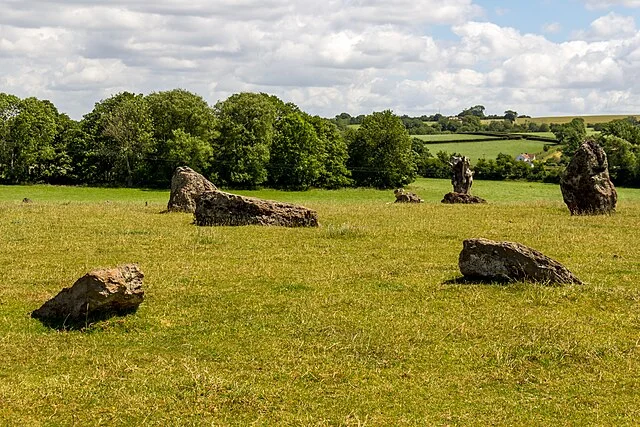
Excavations at Stanton Drew have been limited, but geophysical surveys have provided valuable insights. Ground-penetrating radar and magnetometry studies conducted in the late 20th century revealed the existence of buried features. These surveys uncovered subsurface ditches and pits, suggesting that the site had more extensive structures beyond the visible stones.
Archaeologists also discovered that the Great Circle was surrounded by a timber structure, which has long since decayed. This wooden element was likely used alongside the stone circles for religious or social functions.
Historical Context
The construction of Stanton Drew occurred during the Late Neolithic, a time when large monuments were being built across Britain. Stone circles, timber structures, and other henges (earthen enclosures) were central to Neolithic ceremonial life. Stanton Drew stands alongside other important monuments from this era, including Stonehenge and Avebury.
Though Stanton Drew is less famous than its counterparts, it remains an important example of Neolithic monument-building traditions. Its relative lack of disturbance by modern activity has preserved its archaeological integrity.
Current State and Preservation
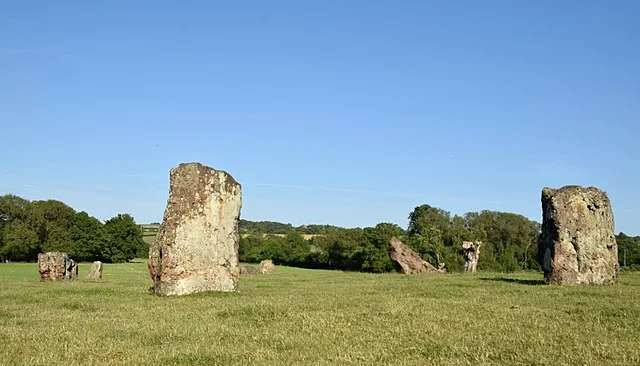
Today, Stanton Drew remains largely intact, though many stones have fallen. The site is maintained by English Heritage, and public access is allowed. Efforts to preserve the site focus on preventing further erosion and ensuring the stones remain undisturbed.
In recent years, the site has gained more attention due to increased interest in ancient British monuments. However, it remains less crowded than more popular sites like Stonehenge, allowing for a quieter experience for visitors.
Conclusion
The Stanton Drew stone circles offer a glimpse into the ceremonial practices of Neolithic Britain. Their scale and complexity suggest they were an important site for the communities that built them. While much about Stanton Drew remains mysterious, ongoing archaeological research continues to uncover new information about this ancient site.
Source:

